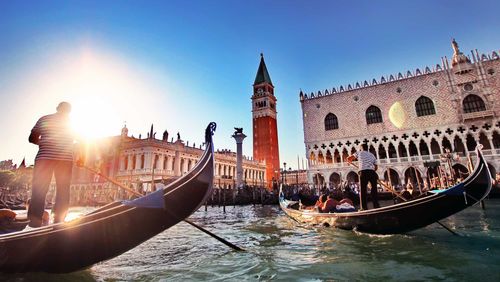The ruins of Machu Picchu
Though more than 1000m lower than Cusco, Machu Picchu seems much higher, constructed as it is on dizzying slopes overlooking a U-curve in the Río Urubamba. More than a hundred flights of steep stone steps interconnect its palaces, temples, storehouses and terraces, and the outstanding views command not only the valley below in both directions but also extend to the snowy peaks around Salcantay. Wherever you stand in the ruins, you can see spectacular terraces (some of which are once again being cultivated) slicing across ridiculously steep cliffs, transforming mountains into suspended gardens.
The name Machu Picchu apparently means simply Old or Ancient Mountain. With many legends and theories surrounding the position of the site, most archeologists agree that its sacred geography and astronomy were auspicious factors in helping the Inca Pachacuti decide where to build this citadel here at 2492m. It’s thought that agricultural influences as well as geo-sacred indicators prevailed, and that the site secured a decent supply of sacred coca and maize for the Inca nobles and priests in Cusco.
The discovery of Machu Picchu
Never discovered by the Spanish conquerors, for many centuries the site of Machu Picchu lay forgotten, except by local Indians and settlers, until it was found on July 24, 1911 by the US explorer Hiram Bingham. It was a fantastic find, not least because the site was still relatively intact, without the usual ravages of either Spanish conquistadores or tomb robbers. Accompanied only by two locals, Bingham left his base camp around 10am and crossed a bridge so dodgy that he crawled over it on his hands and knees before climbing a precipitous slope until they reached the ridge at around midday.
After resting at a small hut, he received hospitality from a local peasant who described an extensive system of terraces where they had found good fertile soil for their crops. Bingham was led to the site by an 11-year-old local boy, Pablito Alvarez, but it didn’t take him long to see that he had come across some important ancient Inca terraces – over a hundred of which had recently been cleared of forest for subsistence crops. After a little more exploration Bingham found the fine white stonework and began to realize that this might be the place he was looking for.
Origins of Machu Picchu
Bingham first theorized that Machu Picchu was the lost city of Vilcabamba, the site of the Incas’ last refuge from the Spanish conquistadors. Not until another American expedition surveyed the ruins around Machu Picchu in the 1940s did serious doubts begin to arise over this assertion, and more recently the site of the Incas’ final stronghold has been shown to be Espíritu Pampa in the Amazon jungle.
Meanwhile, it was speculated that Machu Picchu was perhaps the best preserved of a series of agricultural centres that served Cusco in its prime. The city was conceived and built in the mid-fifteenth century by Emperor Pachacuti, the first to expand the empire beyond the Sacred Valley towards the forested gold-lands. With crop fertility, mountains and nature so sacred to the Incas, an agricultural centre as important as Machu Picchu would easily have merited the site’s fine stonework and temple precincts.
It was clearly also a ritual centre, given the layout and quantity of temples; but for the Incas it was usual not to separate things we consider economic tasks from more conventional religious activities. So, Machu Picchu represents to many archeologists the most classical and best-preserved remains in existence of a citadel used by the Incas as both a religious temple site and an agricultural (perhaps experimental) centre.
Sunrise over Machu Picchu
It’s easy enough to get into the site before sunrise, since the sun rarely rises over the mountains to shed its rays over Machu Picchu before 7am. Make your way to the “hitching post” of the sun before dawn for an unforgettable sunrise that will quickly make you forget the hike through the pre-dawn gloom – bring a torch if you plan to try it.



_listing_1614463296559.jpeg)






































